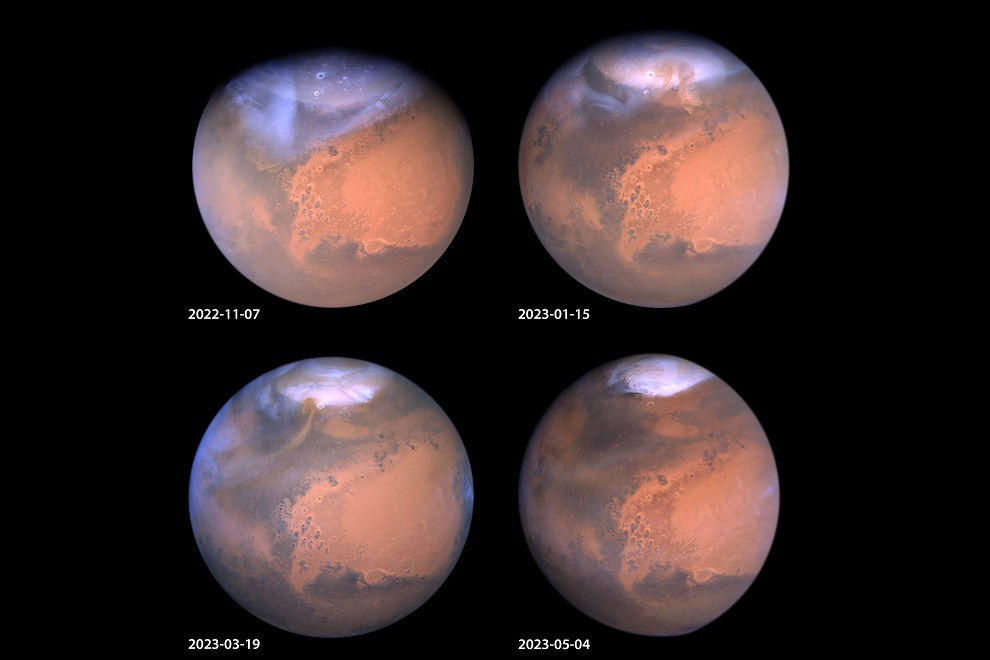The Emirates Mars Mission has released its eighth batch of data on the Martian atmosphere captured by the Hope probe, providing significant advancements in our understanding of Mars. The latest dataset adds to the crucial insights of previously released datasets on the transition between Martian seasons by covering the end of the dust storm season on Mars as the planet enters a new year during spring equinox on the northern hemisphere.
The EMM Science Team emphasized the uniqueness of this achievement, stating that the novelty lies in EMM’s ability to regularly provide diurnal coverage across the entire planet. No other mission has been able to accomplish this over such an extended period. By leveraging this ground-breaking capability throughout an entire Martian year, we can observe and analyze the seasonal transitions on Mars.
They further highlighted the significance of the data, explaining that, despite Mars’ predictable meteorology, subtle variations still elude our understanding. During the extended mission, we will delve into these nuances, focusing on inter-annual differences and gathering further observations related to morning-to-evening variability, among other factors.
These new observations enable scientists and researchers to deepen their study of seasonal transitions on Mars and gain insights into year-to-year changes. The Emirates Mars Mission’s ‘Hope Probe’ stands as the first scientific endeavor to provide accurate, daily coverage of Mars’ weather conditions from the surface to the edge of the planet’s atmosphere.
The eighth data batch covers data collected from December 1st, 2022 to February 28th, 2023 for Level 1 and Level 2 data and September 1st,2022 to November 30th, 2022 for Level 3 data. This dataset includes high cadence observations of clouds (December 28, 2022; January 6, 15, and 31, 2023; and February 7, 12, and 23, 2023) and dust (December 4, 5, and 18, 2022). The rich data collected by the Emirates Mars Infrared Spectrometer (EMIRS), Emirates Mars Ultraviolet Spectrometer (EMUS), and the Emirates Exploration Imager (EXI) offer invaluable insights into the diverse atmospheric factors on Mars and their influence on its climate and environment. For the first time, this release also includes EMUS L3 corona products containing derived information about the distribution of the extended cloud of hydrogen and oxygen atoms surrounding Mars and escaping to space.
With this latest data release, the Emirates Mars Mission’s ‘Hope Probe’ has now unveiled a staggering amount of 2.9 Terabytes of atmospheric data from the red planet through its Science Data Center.
Since its arrival in orbit, the Emirates Mars Mission has made significant contributions to the scientific community, publishing 18 research papers in esteemed international journals. This wealth of information not only benefits researchers and scientists worldwide but also fosters the growth of research conducted by Emirati students and scholars.
Additionally, the Emirates Mars Mission’s ‘Hope Probe’ has achieved groundbreaking milestones in its exploration, capturing unprecedented observations of Mars’ smaller moon, Deimos. Utilizing all three of its science instruments, the probe conducted close flybys, with Hope reaching as close as 100 kilometers to Deimos. This marks the closest approach by any spacecraft to Mars’ smaller moon since the Viking mission in 1977.












